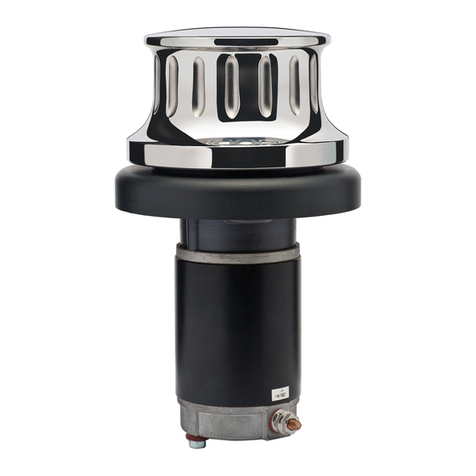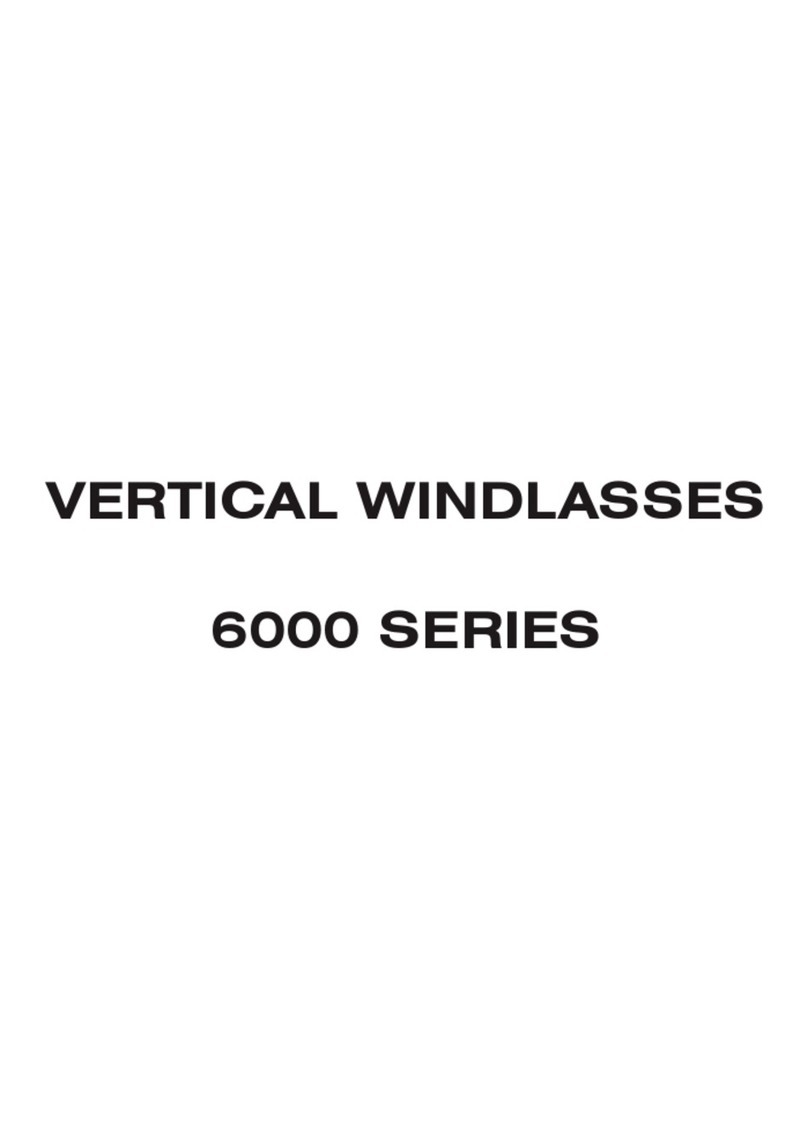
6
** IMPORTANT HINTS FOR SAFE USE OF WINDLASS **
BE SURE YOUR WINDLASS HAS BEEN CORRECTLY SPECIFIED AND
INSTALLED, YOURS AND OTHERS SAFETY MAY DEPEND ON IT. THE
WINDLASS SHOULD BE USED IN CONJUNCTION WITH A CHAINSTOPPER OF
THE APPROPRIATE SIZE. FOR AUTOMATIC OPERATION TO BE POSSIBLE, THE
ANCHOR MUST BE SELF LAUNCHING.
MAXWELL WILL NOT IN ANY WAY BE HELD RESPONSIBLE FOR SELECTION OF
A WINDLASS BY OTHERS, INCLUDING DISTRIBUTORS AND AGENTS. IF IN
DOUBT, SEND FULL DETAILS OF YOUR CRAFT TO OUR SALES DEPARTMENT
FOR APPRAISAL AND WRITTEN RECOMMENDATION.
1. Run the engine whilst raising or lowering the anchor. Not only is this a safety
precaution, it also helps minimise the drain on the batteries.
2. Always motor up to the anchor while retrieving the chain.
Do no use the Windlass to pull the boat to the anchor.
3. If the anchor is fouled, do not use the Windlass to break it out.
With the chainstopper taking the load, use the boats engine to break the
anchor loose.
4. Do not use the Windlass as a Bollard.
In all but the lightest conditions, engage the chainstopper after completing
the anchoring manoeuvre.
5. In heavy weather conditions, always use a heavy anchor snub from the chain
directly to a Bollard or Sampson Post.
6. DO NOT USE THE CHAINSTOPPER OR WINDLASS AS A MOORING POINT.
7. ALWAYS TURN THE ISOLATOR SWITCH TO “OFF” BEFORE LEAVING BOAT.
8. When using the Windlass DO NOT SWITCH IMMEDIATELY FROM ONE
DIRECTION TO THE OTHER WITHOUT WAITING FOR THE WINDLASS TO
STOP AS THIS COULD DAMAGE THE WINDLASS. Abuse is not covered by
Warranty.
9. The Circuit Breaker and Isolator Switch Panel provides high current
protection for the main supply cables and also the means to isolate the
circuit. When the Isolator Switch is “ON” (red indicator light shows) the
system can be activated at either the footswitches or the remote control
station.
When the system is not being used, ensure that the Isolator Switch is
turned “OFF”.
10. Never proceed at speed with a bow mounted self launching anchor in
position, without first ensuring that your winch clutches are fully engaged,
and having made fast the anchor and engaged your chainstopper.
DO NOT DEPEND ON THE WINDLASS TO HOLD THE ANCHOR IN ITS BOW
ROLLER. A NYLON LINE SHOULD BE USED TO SECURE THE ANCHOR INTO































